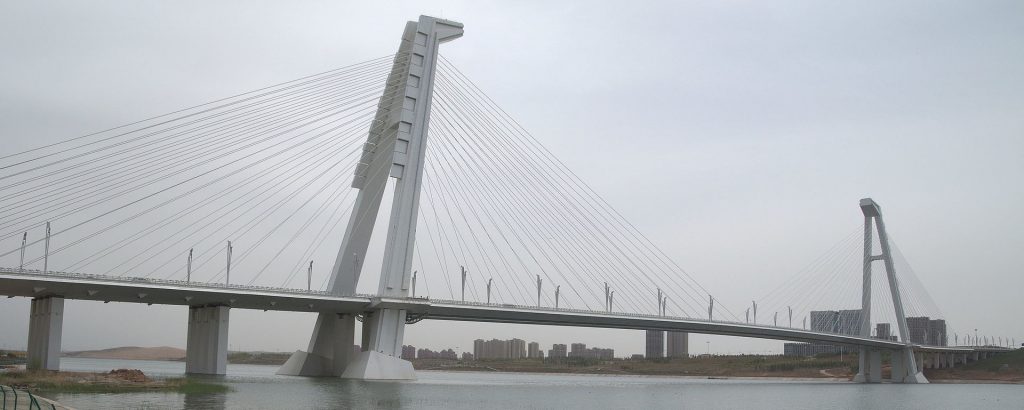A Chinese ghost city

We tend to think of ghost towns as places where all the residents have long since packed up and gone, but in China some huge cities have recently been completed – built entirely on the opposite premise, that people will arrive.
One such new ghost city is Kangbashi, located on the barren steppes of Inner Mongolia, the home of summer sandstorms and freezing winters.
While it may be fairly typical of modern cities in most respects, Kangbashi stands out because of its remote location, its huge size, its impressive monumental architecture – and an almost total lack of residents.
A city built for over one million residents remains largely empty
Kangbashi was intended to house over a million residents and the city was virtually completed by 2009. Every possible need of the future residents was catered for, with sporting centres and stadiums, cultural galleries and museums, showcase architecture, monumental gardens and massive shopping centres.
The only thing missing was residents, as only a few thousand moved in when the building work was completed. The few westerners stumbling across Kangbashi at that time could not make any sense of what they saw – a huge city without people; it was a ghost city.
Why was such a huge empty city built?
This prompted questions about the purpose of Kangbashi. Some cynics say that the city’s remote location indicate that it was designed to house people displaced from other parts of China in the event of a nuclear war, or other major catastrophe. It was designed to be a sort of refuge of last resort. However, given the scale of the city’s monumental artworks, impressive architecture and attempts to encourage tourism, this seems extremely unlikely.
Others claim that the city was built to help diversify the economy of the area, to encourage the impoverished rural communities in the region to relocate to Kangbashi, assisted by generous compensation packages. If this is true, then the city’s isolated location and harsh climate would not matter to people already used to such conditions.
Property investing is a form of life insurance to some
Another cause of the lack of residents is that many Chinese see property investment as a form of insurance, and buy new apartments not to rent out, but to keep brand new and unoccupied, as security for the future, like someone might hoard gold under the bed. Therefore, while many apartments in Kangbashi were purchased by Chinese investors, only a few have been bought for their owners to occupy.
Maybe the city just needs time. The population keeps growing steadily with nearly 200,000 residents at last count and nearly 5,000 local businesses operating successfully. Tourism is also growing steadily, and likely to rise even more as the city slowly springs to life.
If we build it, will they come?
The concept of a whole city being built on the premise that residents will follow is something we are not comfortable with in the west. The proof, if we need any, lies in the massively overdeveloped high rise, high density unit blocks in our inner urban areas whose owners are suffering from high vacancy rates and falling prices.
The issue is that these have been built by developers on the basis that past buyer demand reflects future buyer demand. Rental demand is not the concern of a developer, although it soon becomes one for the investor who buys a property.
In centrally managed and controlled countries such as China, prebuilding a whole city is quite feasible and residents can be created by encouraging or even forcing people to relocate.
It remains to be seen whether the vision will be realised and Kangbashi becomes a model for other such bold enterprises, but at this stage the ghost city is definitely slowly coming to life.
Acknowledgement: Image by Popolon – Own work, CC BY-SA 4.0, https://commons.wikimedia.org/w/index.php?curid=44947017